- Home
- Firewood Types
What Firewood Types Should I Use?
This post may contain affiliate links so I earn a commission.
When deciding what firewood types to use you should consider one thing, not all firewood is the same!
Each tree species has various traits that could make you want to use it or avoid it.
Depending on where you live you could have several great trees to choose from or maybe just a few.
While there's not much you can do about the trees growing in your area, you can choose to spend your time cutting up quality wood that will effectively heat your home instead of wasting time on an inferior species.
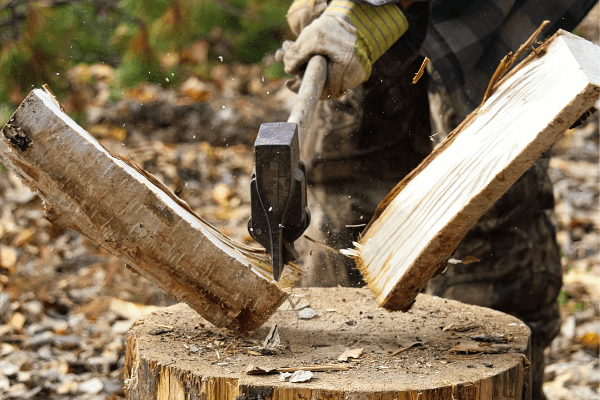
If you live in the northeast chances are you have a lot of great hardwoods like oak, ash, beech or maple to choose from.
These are all a favorite firewood choice of mine and have suited me well for years.
Those living in the western portion of the United States usually won't have access to these choices listed above but you'll have other great options like lodgepole pine and douglass fir.
If you don't plan on cutting your own firewood, another option is purchasing it from a local supplier.
Good quality seasoned hardwood will cost more than a green, less desirable species.
However, buying green firewood could save you money.
The only downfall with buying green firewood is the time needed to season the wood.
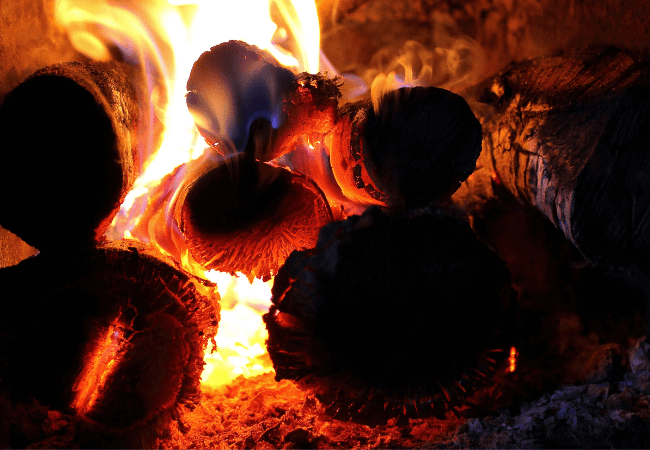
You can't expect to buy green firewood at a reduced price and burn it immediately.
Green firewood that has a high moisture content simply won't burn very well.
It smokes and sizzles inside your wood stove or fireplace potentially causing creosote to build up inside your chimney.
As a general rule, hardwood will burn longer but it takes longer for the wood to season or dry out.
Red oak takes about 2 years for it to fully season while other hardwoods take around a year.
A softwood will season much faster but will not burn as long.
For example, a hardwood like maple will work nice for heating your home overnight because it will burn hot and last a while, leaving behind a nice bed of coals the next morning to restart your fire.
A softwood like pine works really well for campfires because it burns and lights easily.
Softwood also works great for kindling because it splits really easy, or you can mix some softwood in with your hardwood for a more balanced fire.
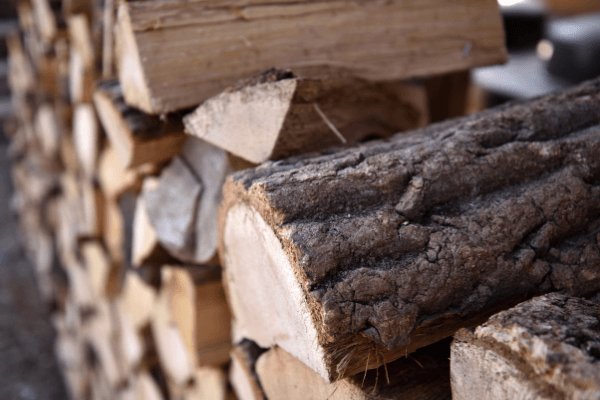
Knowing how to identify the tree you cut or burn is very important.
When choosing what type of wood to burn you may want to consider these basic things:
- Is this a hardwood or a softwood?
- Will this tree split easily?
- How much heat will it produce?
- What am I using the wood for?
Some Common Firewood Types
While there are many different firewood types, some of the most common and popular types are listed here.
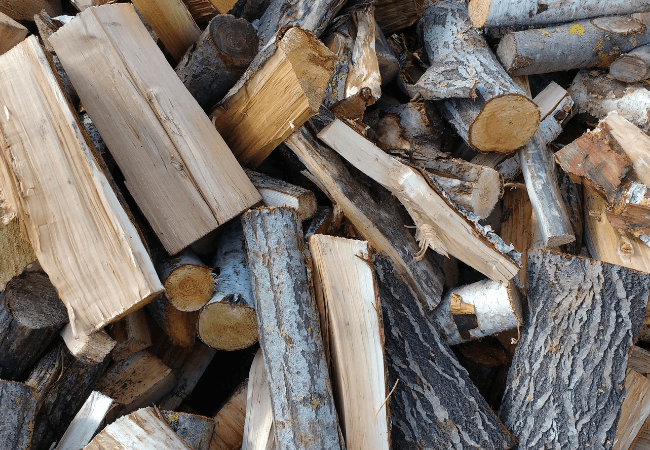
Click on a firewood to learn more about the tree and see the pros and cons of each species.
Firewood Types - What are BTUs?
BTU or British Thermal Unit is the amount of energy required to heat one pound of liquid water by one degree fahrenheit.
We now use BTUs to describe common things such as the heat generated by a furnace.
It may also describe how much energy a fuel has, such as wood.
The following link describes the firewood BTUs generated from popular firewood types.
Getting The Most Heat Out Of Your Firewood - Firewood Types
As mentioned earlier, no matter which firewood type you use, the wood needs to be dry before you burn it.
Nothing is more frustrating than trying to keep a fire going with wet wood.
So, in order to make sure you're prepared for the upcoming winter you'll need to plan ahead.
It's a good practice to cut your firewood one year, stack it, cover it and burn it the next year.
This allows plenty of time for the wind and sun to dry out the wood creating a pleasant and safe burning experience.
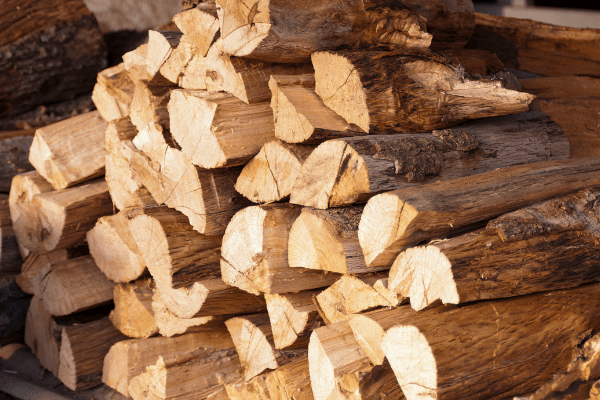
Stack your firewood in rows that are elevated off the ground.
Stacking the wood on pallets works great but you can also use 2x4's or other scrap wood.
By elevating the firewood off the ground it accomplishes a couple things.
First, it allows the wind to circulate around your entire firewood stack allowing it to dry out faster.
Second, it prevents the wood from soaking up ground moisture and also prevents insects and other animals from making your firewood their new home.
Also, when stacking the wood you can make the row any length, just don't stack it more than 4 feet tall or it will probably fall over.
It's very frustrating to walk out to your firewood stack after a windy day only to find all your hard work has tipped over.
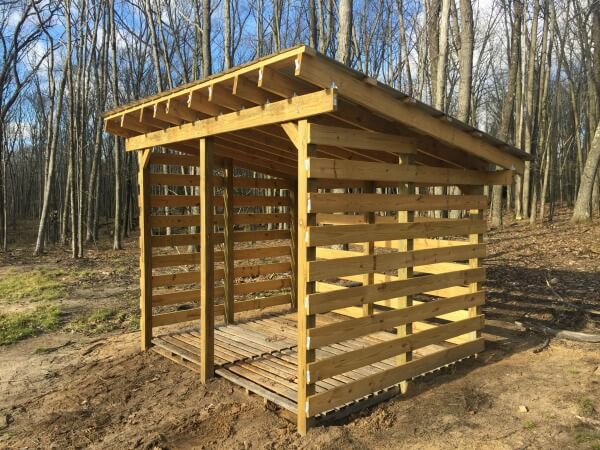
Stacking your firewood inside a firewood shed that has an elevated floor, slatted sides and a roof to repel rain and snow is ideal, but if you don't have access to a firewood shed you can use a tarp to cover your wood.
When using a tarp or other firewood cover, only cover the top 1/3 of the firewood stack.
If you cover the entire stack with the tarp you're preventing the wind and sun from penetrating the wood and allowing it to dry.
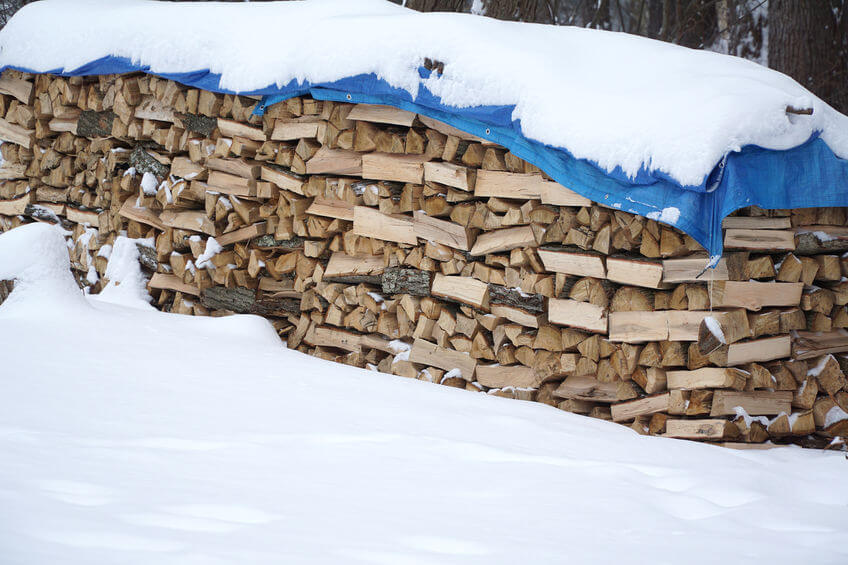
Plus, if you completely cover the firewood with a tarp the moisture won't have anywhere to escape and there's a good possibility the wood will grow mold.
The photo above shows firewood that has been stacked and properly tarped by only covering the top portion of the firewood stack.
It effectively keeps the rain and snow off your firewood while still allowing the sun and wind to keep your firewood dry.
Firewood Types - Overall
While we all won't live in an area that produces the top BTU firewood choice, that doesn't limit your options for burning a high quality firewood.
By mixing in lesser grade firewood with longer burning choices, you can achieve a great fire to heat your home throughout the winter.
Just make sure the wood is seasoned and you can reduce or even eliminate your energy bills buy burning firewood as your main source of heat.

About the Author
Obsessed with firewood, Nick is behind over 350+ of Firewood For Life's articles, as well as countless reviews, guides and YouTube videos to help readers like you reduce heating costs and create the perfect fire.


